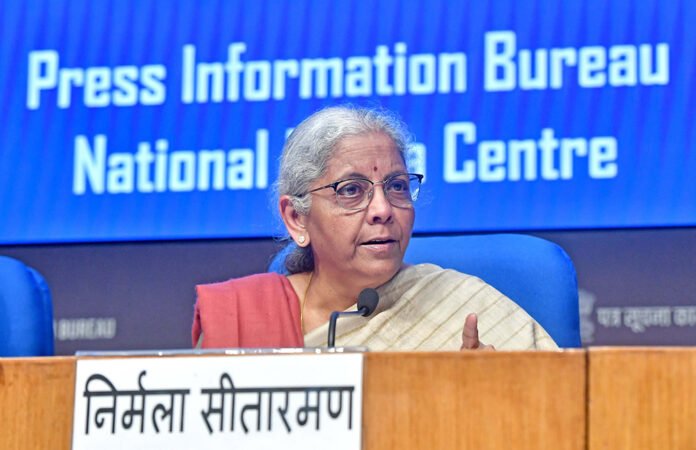The dream of a Viksit Bharat of the future, lies in the reality of a Surakshit Bharat, today. The Defence Budget 2025 has cast more clouds, particularly in the capital outlay than sunshine in this crucial national mission.
The bugles of the fastest growing economy and third largest projected economy by 2030 with a GDP of around $7 trillion gives pride but ignores that the bugler is the soldier who needs to be empowered for future wars and multidomain escalating threats.
The Defence Budget has a price on national security. The announcement to observe 2025 as the ‘Year of Reforms’, aims to ensure the focus on military modernisation and enhancing Aatmanirbharta (self-reliance) in defence, remains a challenge with the current allocation. The new scheme portion out of the Rs 1.8 lakh crore capital is miniscule and merits additional allocation at the RE stage.
The wars in Ukraine and the Middle East have once again sent loud messages on the need for self-sufficiency, self-reliance, and technology induction to be future-ready. Enhancing capabilities take time and the intentions of adversaries can change anytime. This requires a defence ecosystem and a well-grounded defence industrial base with technology sovereignty. It requires monetary investment today and sustained matching support, thereafter.
The fiscal resources would never suffice in a single budget; it requires a long-term integrated vision, a national plan and matching allocation. Ironically both the elusive National Security Strategy (NSS) and adequate fiscal allocation are critical voids for India.
Thus exists a mismatch in policy formulation, resource allocation and desired execution. Further, any defence reforms and transformation to be sustainable must address a transformed culture, transformed defence planning process, defence budgetary reforms and transformed joint service capabilities.
The total allocation to the MoD constitutes 13.45% of the Union Budget as compared to 18% in 2016-17. More importantly out of every Rs 1 spent by the Government only 8 paisa go to the defence, which includes salaries and pensions. Can this slim capex availability be adequate for a nation facing turbulent borders, terrorist threats and escalating regional threats?
Defence Budget 2025: An Overview
The total defence allocation for 2025-26 stands at Rs 681,210.27 crores, comprising Rs 311,731 (45.78%) crores for revenue expenditure, Rs 180,000 (26.42%) crores for capital expenditure, Rs 160,795 (23.60%) crores for pensions, and Rs 28,682 (4.2%) crores for civil expenses.
Compared to the previous budget estimates, the capital allocation has increased by 4.65%, revenue expenditure by 9.29%, pensions by 13.87%, and Ministry of Defence (MoD) civil expenses by 10.47%.
Note, the increase in capital outlay is the least; less than civilian expenses which is the second highest increase after the defence pensions (which includes pensions for civil defence staff too).
The government has given Rs 6.81 lakh crore (USD 78.70 Billion) for expenditure on defence, a 9.5 percent increase over the FY 2024-2025 which was allotted Rs 6.21 lakh crore (USD 74.82 Billion).
This is higher than a 4.5% increase in 2024-25. When compared to the RE stage, the increase is around 6 percent more than last year’s Rs 6.41 lakh crore. The average inflation for 2024 has been pegged at 5.22% based on the Consumer Price Index (CPI). Thus, it has less real purchasing power even without considering market hikes.
The defence budget as a percentage of GDP remains at 1.91% of the GDP, same as in 2024. The GDP represents the total market value of all goods and services produced within a country in a specific period.
If the pension component is removed, it borders around the 1962 allocation of 1.64% before the Chinese invasion! The average global estimate is approximately 2.3% in terms of GDP.
The total allocation to the MoD constitutes 13.45% of the Union Budget as compared to 18% in 2016-17. More importantly out of every Rs 1 spent by the Government only 8 paisa go to the defence, which includes salaries and pensions.
Can this slim capex availability be adequate for a nation facing turbulent borders, terrorist threats and escalating regional threats?
The financial provision made during the budget this year, will, apart from promoting strategic infrastructural development in the border areas, will improve mobility and strategic reach
The Capital Allocation
The capital outlay of Rs 1.8 lakh crore, is up from the Budget Estimates (BE) of Rs 1.72 lakh crore in the previous fiscal year. It is 4.65 % higher than the previous BE to BE figure, but has less purchasing power if cost escalation and inflation are accounted for.
Last year RE was downgraded to Rs 1.59 crore not because the defence forces could not spend the entire amount, but because of the bureaucratic procedural process and policies which have more snakes than ladders to progress cases. This highlights inefficiencies in the procurement process and project execution which need reforms and a cultural change.
Main allocations in terms of outlay were Rs 486 crore for aircraft and aero engines, and Rs 43.9 crore for the naval fleet – two key areas where India is seeking to enhance its capabilities.
The capital component has a non-modernisation component and a modernisation component which has a committed liability sub-component and new schemes sub-component. Out of Rs 1.8 lakh crore, Rs 1.48 lakh crore is earmarked for the acquisition of advanced platforms such as remotely piloted aircraft, next-generation submarines, deck-based aircraft, and AI-driven defence systems.
Out of the above Rs 1.12 lakh crore (75% of the modernisation budget) allocated for procurement from Indian industries, supporting Aatmanirbharta and fostering private sector participation. Significant investments need to be planned in cybersecurity, space warfare, artificial intelligence (AI), robotics, UAS/ C-UAS systems and machine learning, for technological dominance in warfare.
The need of the hour is to formulate a comprehensive National Security Strategy, with periodic defence reviews to ensure preparedness. A progressive increase in the defence budget to 2.5% of GDP, with an R&D component reaching 1.5% of GDP, is essential
Ironically, much of the capital expenditure allocated to the defence ministry will go towards fulfilling India’s contractual obligations as committed liabilities, leaving limited scope for new schemes.
Hopefully, to bridge the present gap, prudence in the RE stage may emerge for additional allocation as well as big-ticket clearances not traditionally delayed at the CCS level.
Revenue Expenditure
Revenue expenditure is to take care of Pay & Allowances of the Armed Forces Personnel and for sustenance & operational preparedness. The overall revenue expenditure for revenue has been pegged at Rs 3.12 lakh crore with an increase of 9.29 % against the previous year’s allocation. The amount for sustenance and operational readiness is not known yet.
The revenue-to-capital ratio stands at 63:37 from 62:38 in the previous year. Pensions and salaries are based on actuals. The reality is MoD budget directly pays nearly 5.1 million people, of which 1.44 million are active uniformed personnel, 3.2 million pensioners (a quarter percentage of defence civilians) and 0.4 million serving defence civilians and other heads.
Total Budgetary allocation on account of Defence pensions is Rs 1.6 lakh crore which accounts for 23.60% of the budget and an increase of 13.87% higher than the allocation made during 2024-25, essentially catering for increased pensioners and OROP’s third revision of July 2024, which ensures pension adjustments account for inflation and cost-of-living changes.
A pragmatic approach to defence procurement should be based on a risk-sharing-gain-sharing model, ensuring quality, order continuity, and stability in policies while addressing cost variables and payment delays
The Defence Pension Budget, however, is big in absolute numbers due to the large number of retired personnel which itself is a function of soldiers being compulsorily retired early from 36 years of age onwards owing to the requirement of maintaining a young and physically fit military.
Thus, India has 2.4 defence pensioners for every serving soldier while the ratio for civilians is approximately one pensioner for each serving employee worldwide.
It is also worthwhile to mention that the average per capita pension of defence personnel is much lower than a central government’s civil employee. These facts remain hidden and treasured.
The Budget Positives
The allocation to BRO at Rs 7,146 crore marks an increase of 10% over 2024, for border area infrastructure development, though the same is much less than the increase in 2024 as compared to 2023.
The financial provision made during the budget this year, will, apart from promoting strategic infrastructural development in the border areas, will improve mobility and strategic reach.
The Coast Guard’s budget of Rs 9,676 crore (26.5% increase) for acquiring Advanced Light Helicopters, Dornier aircraft, and Fast Patrol Vessels to enhance maritime security and disaster response capabilities will add teeth to its arsenal to address the maritime emerging challenges.
The Defence Research and Development Organisation (DRDO) receives a 12% hike, with Rs 26,816.82 crore allocated to bolster indigenous technological advancements. Yet the R&D allocation as a percentage of GDP remains one of the lowest for India at below 1% of GDP. This requires a long-term perspective and a substantial increase.
There has also been an increase in the ECHS budget, though still insufficient to meet the aspirations of veterans.
There must be fresh thinking on the need to find innovative solutions for meeting the modernisation objectives for smart overmatch over threats within a realistic budgetary forecast
The Need of the Hour
The need of the hour is to formulate a comprehensive National Security Strategy, with periodic defence reviews to ensure preparedness. A progressive increase in the defence budget (excluding salaries and pensions) to 2.5% of GDP, with an R&D component reaching 1.5% of GDP, is essential.
Additionally, establishing a dedicated, non-lapsable Modernisation Fund for Defence and Internal Security (MFDIS) will optimise defence procurement. A separate budget provision for domestic capital procurement should be accompanied by a roll-on appendage.
Strengthening joint force capabilities, particularly in cyber, AI, and space, is crucial. The procurement policy must be streamlined to reduce bureaucracy in both services and the MoD, ensuring time-sensitive decision-making and continuity.
The Aatmanirbhar Bharat initiative must transcend slogans by developing a robust defence industrial base, capable of sustaining future wars through Indigenous production, with clear verification of Indigenous content by an independent agency.
A pragmatic approach to defence procurement should be based on a risk-sharing-gain-sharing model, ensuring quality, order continuity, and stability in policies while addressing cost variables and payment delays.
Institutionalising technology mapping and price indexing is necessary for coherence and transparency in Quality-cum-Cost-Based Selection (QCBS). While technology must be prioritised in defence budgeting, its effective absorption and exploitation require human capital, doctrinal evolution, and structural reforms within the armed forces.
No defence budget is ever sufficient the world over and the armed forces always call for more. Given the need to balance social growth with security in an adverse security environment, a pragmatic approach would be a means for both to find the sweet spot.
Thus, there must be fresh thinking on the need to find innovative solutions for meeting the modernisation objectives for smart overmatch over threats within a realistic budgetary forecast.
Budgetary allocation and budgetary reforms need a review along with the services to introspect and optimise allocation with capabilities based on a value, vulnerability, and risk analysis.
The author, a PVSM, AVSM, VSM has had an illustrious career spanning nearly four decades. A distinguished Armoured Corps officer, he has served in various prestigious staff and command appointments including Commander Independent Armoured Brigade, ADG PP, GOC Armoured Division and GOC Strike 1. The officer retired as DG Mechanised Forces in December 2017 during which he was the architect to initiate process for reintroduction of Light Tank and Chairman on the study on C5ISR for Indian Army. Subsequently he was Consultant MoD/OFB from 2018 to 2020. He is also a reputed defence analyst, a motivational speaker and prolific writer on matters of military, defence technology and national security. The views expressed are personal and do not necessarily carry the views of Raksha Anirveda






